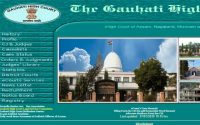$100 Website Offer
Get your personal website + domain for just $100.
Limited Time Offer!
Claim Your Website NowBaghjaan Fire: The Youth Of Assam Have Numerous Questions, But Do We Ask Them To?
Source:-https://www.youthkiawaaz.com
It has been almost 5 months and yet, the authority hasn’t been able to put out the fire outburst in the Baghjaan region.
15 years back, a similar incident took place at Dikom, Dibrugarh, where global fire-fighting experts had to be brought in to control the blaze, which took around 45 days to control. And it could rightly be observed that Oil India Limited hasn’t learnt a single lesson from that incident.
In fact, according to some sources, there were numerous casualties reported in the Baghjaan incident. The well was not fully secured before an attempt was made to move the workover rigs. This indicates sheer ignorance on the part of the Oil India and contactor company officials working there.
After this incident, the people of Assam have been left scared and clueless, uncertain about their future, and unknown about how to help the people of Baghjaan. The young generation of Assam too seems clueless about how to extend help to the people suffering there. They have been examining the situation every day and trying to create awareness among common people. A Twitter storm has also been organised by the students’ fraternity to highlight the issue in front of the mainstream media. But is this enough?
On September 2, Assam’s Industry and Commerce Minister, Chandra Mohan Patowary said that it will take another 6 to 8 weeks more to douse the fire and also mentioned that the experts with specialised equipment from Canada will come to join the operation. The question arises, for how long would the people of Baghjaan need to face this issue? Even if they succeed in putting out the fire, could they bring back the environment that has been damaged already?
In a recent talk show with Joy Baruah, Rakhee Sirauthia Chowdhury, Advocate at Gauhati High Court, mentioned that during this lockdown, Environment Clearance Committee (ECC) has cleared 7 new projects of Oil India Limited to dig 7 more hydrocarbon wells in and around Dibru Saikhowa National Park which was initially proposed in the year 2012. These projects were all categorised as category A projects which need a mandatory public hearing. But EIA draft 2020 categorised them into category B2 which don’t require any public hearing.
Another important point to be kept in mind is that the Dibru Saikhowa region is an eco-sensitive zone.
Eco-sensitive zones are to form buffer stock to protect the biosphere hotspot and the national parks. The eco-sensitive zone framework had been decided in 2011, and according to that, 10 kms from national parks, biosphere hotspots should be considered as an eco-sensitive zone and activities such as commercial mining, industries causing pollution, the establishment of hydroelectric projects, etc. should be completely prohibited.
But in 2016, our state government reduced the distance from 10 kms to 0 km, and the whole idea of the eco-sensitive zones went in vain. Oil India Limited took advantage of the same as they easily got environmental clearance. Thus, this tampering with the eco-sensitive zone is the prime culprit of today’s environmental condition of Assam.
Here the question arises, what should be our priority? Benefits of oil extraction or deflecting the risk, chance, and scope of a single unexpected incident of irreversible harm to the environment? We are not against development, we need it, but not at the cost of the environment. Why can’t we look for alternative sources? Why can’t we use solar energy or other renewable sources of energy?
There are a lot of questions, but this is not the time. Authorities should focus on the Baghjaan incident first. OIL should come in front of the public to mention how they are tackling the problem. It is necessary to address the people as they want to know about their plan and progress regarding this issue.
We are not against the government or any other institutions, we are simply worried about the condition of Baghjaan. We as the youth of Assam have numerous questions regarding the same. But who will address those questions? Who are we to rely on? Authorities should keep this in mind that compensation can never fill the void created by the loss of lives in the saddening incident.



